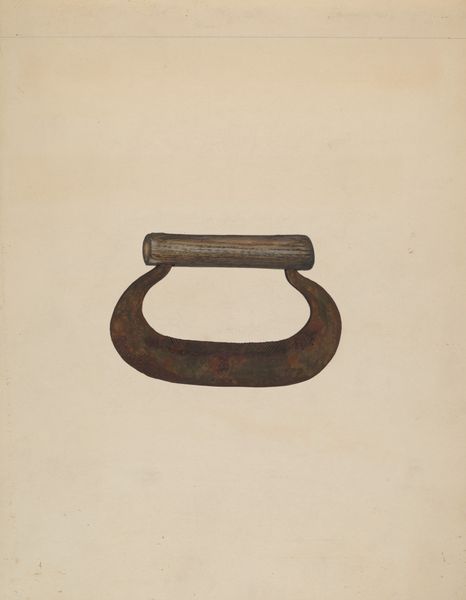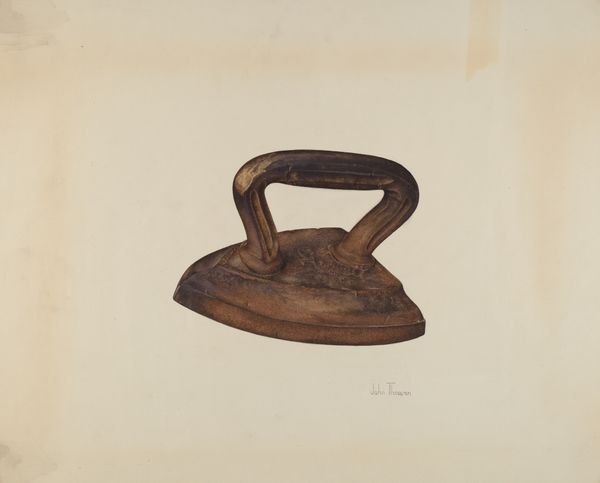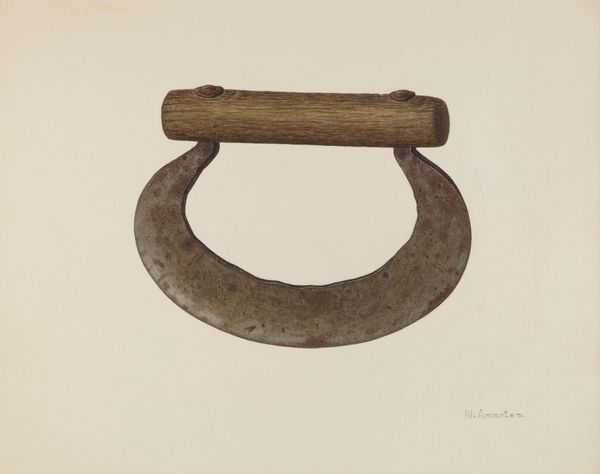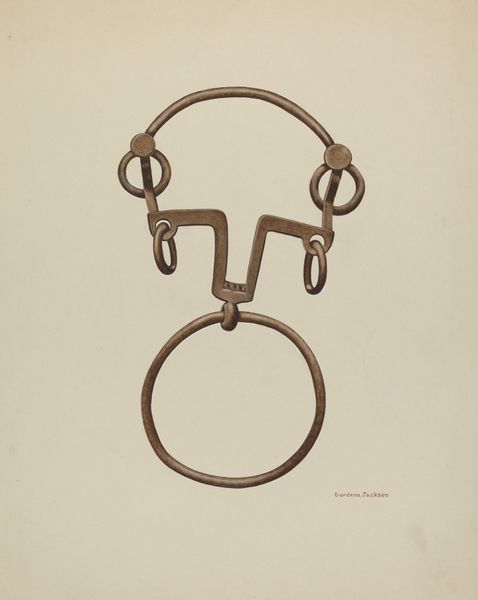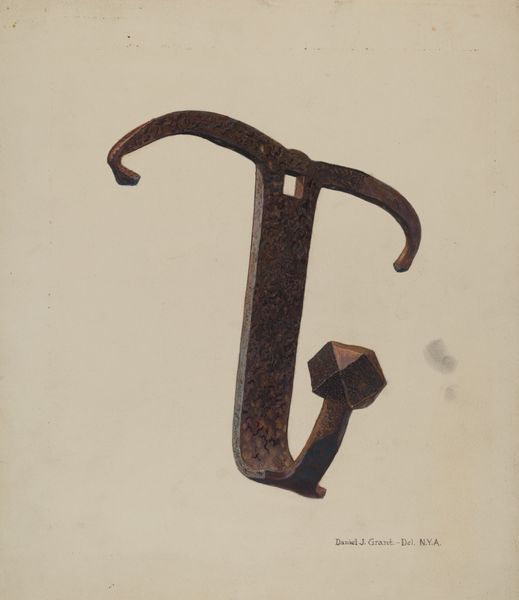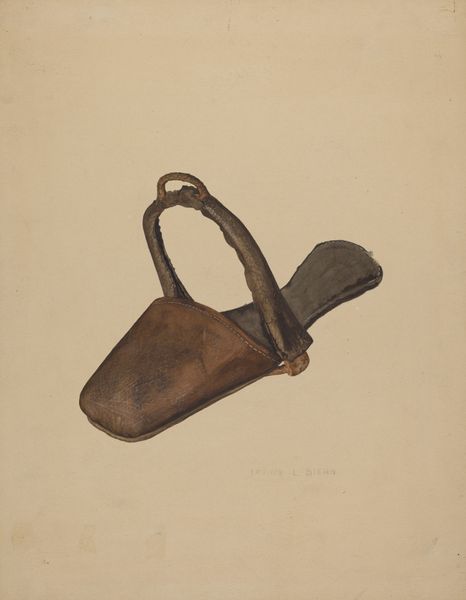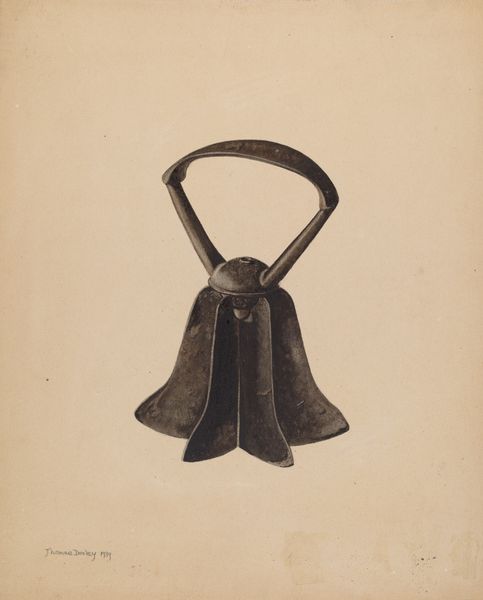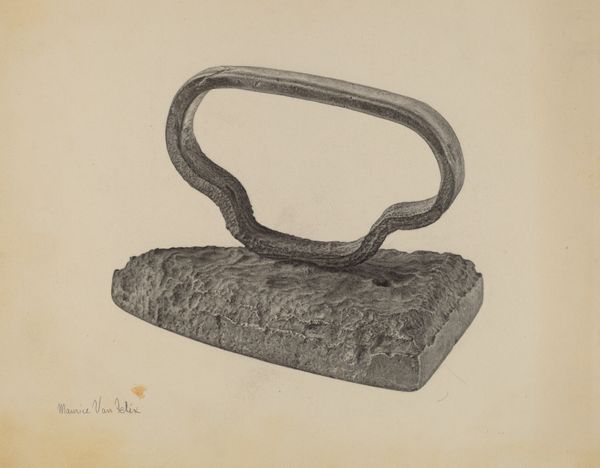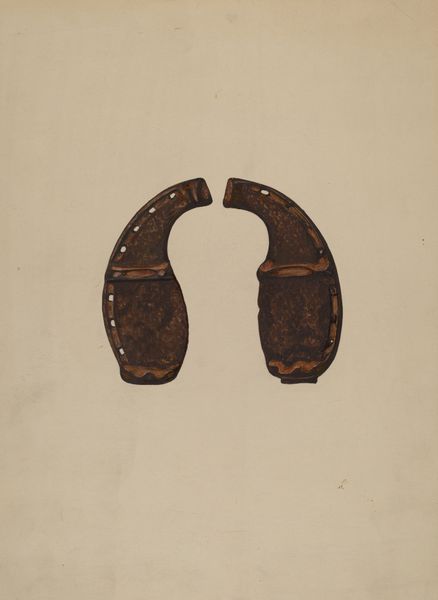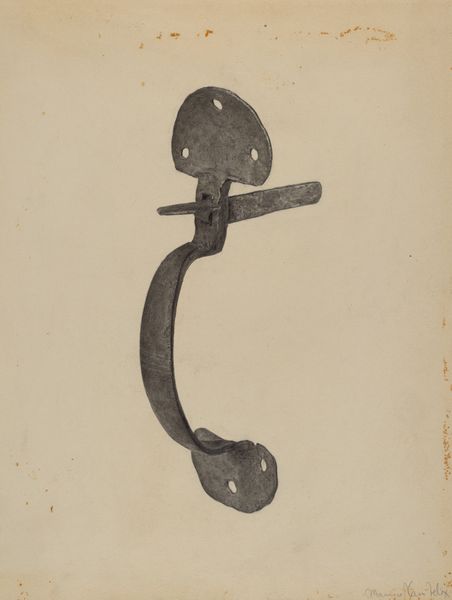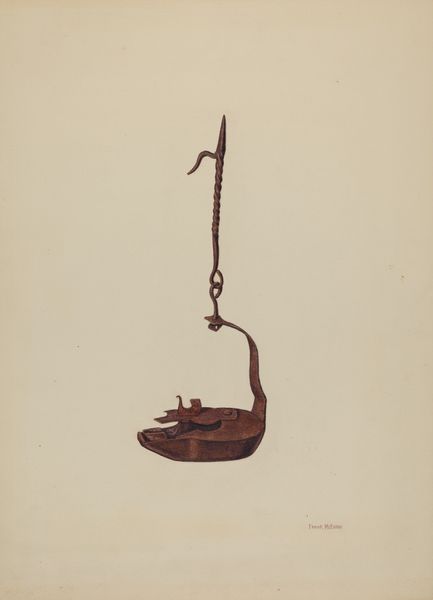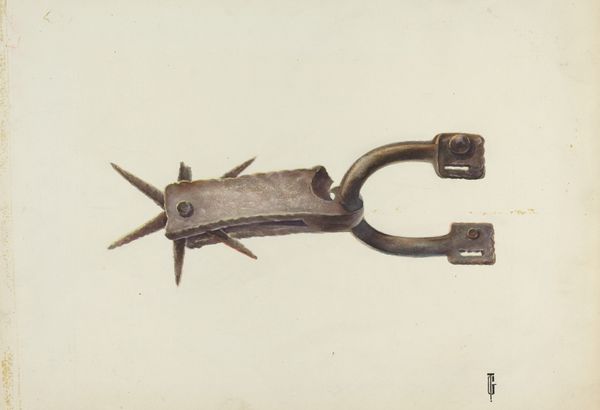
drawing, pencil
#
drawing
#
pencil
#
academic-art
Dimensions: overall: 35.8 x 28 cm (14 1/8 x 11 in.) Original IAD Object: 5 5/16" high; 5 1/2" wide; handle: 1" thick
Copyright: National Gallery of Art: CC0 1.0
Nicholas Amantea made this watercolor painting of a chopping knife, a humble kitchen tool, sometime in the mid-20th century. But why? In the 1930s and 40s, the Index of American Design, a program within the Works Progress Administration, employed artists to document American material culture. The goal was to create a visual archive of objects representing regional traditions, folk art, and craftmanship. This chopping knife is a testament to the era's fascination with the everyday. Rendered with careful attention to detail, the painting elevates a simple utilitarian object to a symbol of American ingenuity and resourcefulness. The Index of American Design and artists like Amantea were interested in preserving a cultural heritage rooted in handcraft and local production, a heritage that they felt was being threatened by industrialization and mass production. Understanding the social and institutional context in which the painting was made allows us to appreciate the historical significance of such an unassuming object. By researching the history of the WPA and the Index of American Design, we can better understand the cultural values and anxieties that shaped artistic production in the United States during the Great Depression.
Comments
No comments
Be the first to comment and join the conversation on the ultimate creative platform.
